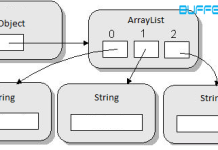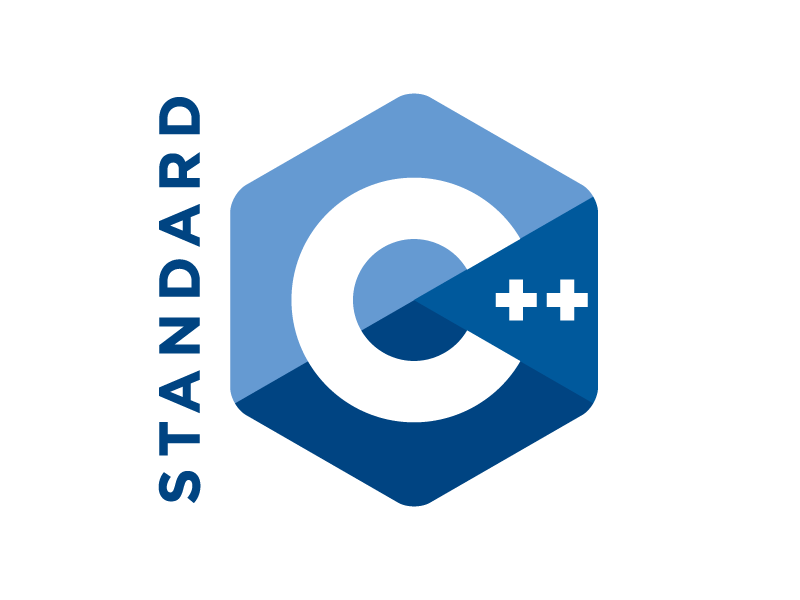An Operator is a symbol that tells compiler to perform certain mathematical or logical operations. Operators are usually same in all programming language like c/c++ , java , python etc.
Built-in C / C++ operators are :
- airthmetic operators
- logical operators
- bitwise operator
- relational operators
- assignment operators
- misclleneous operators
Arithmetic Operators
Consider the following table
Lets assume A=6, B=4 now
| Operator | Description | Example |
|---|---|---|
| + | Adds two operands | A + B will give 10 |
| – | Subtracts second operand from the first | A – B will give 2 |
| * | Multiplies both operands | A * B will give 24 |
| / | Divides numerator by de-numerator | A/B will give 1 |
| % | Modulus Operator and remainder of after an integer division | A%B will give 0 |
| ++ | Increment operator, increases integer value by one | A++ will give 6 BUT ++A will give 7 |
| — | Decrement operator, decreases integer value by one | B– 4 but –B will give 3 |
when we divide a number , output depends upon our datatype , Here ,
- if our datatype is integer , then output is rounded off to the nearest low value integer i,e
here in our case the output should have been 1.5 bt it is rounded of to nearest n low valued integer i.e 1 hence the output is recieved !! - if our datatype is float , now we know that float takes decimal values too
therfore our output will b 1.5
Now lets talk about increment operator / decrement operator :
here when we write A++ then internally firstly A is printed then it is incremented ( just go with the flow …. i.e from left to right )
i.e why our output is 6 here . In the memory it go incremented later n before getting incremented it got displayed . Also in ++A, here incrementation is done first according to the symbol , n then its displayed hence output is 7
Logical operators
Assume A=1 and B=0
in terms of boolean 1 means true and 0 means false
| Operator | Description | Example |
|---|---|---|
| && | Called Logical AND operator. If both the operands are true, only then condition becomes true. | (A && B) is false. |
| || | Called Logical OR Operator. If any of the two operands is true, then condition becomes true. | (A || B) is true. |
| ! | Called Logical NOT Operator. Use to reverse the logical state of its operand. If a condition is true, then Logical NOT operator will make false. | !(A && B) is true. |
Bitwise operator
| p | q | p & q | p | q | p ^ q |
|---|---|---|---|---|
| 0 | 0 | 0 | 0 | 0 |
| 0 | 1 | 0 | 1 | 1 |
| 1 | 1 | 1 | 1 | 0 |
| 1 | 0 | 0 | 1 | 1 |
Basically in bitwise operator the operation is performed bit by bit . Assume A=5 B=6
| Operator | Description | Example |
|---|---|---|
| & | binary AND Operator copies a bit to the result if it exists in both operands. | Write A as 0101B as 0110A&B = 0100 i.e 4 |
| | | Binary OR Operator copies a bit if it exists in either operand. | (A | B) will give 7 which is 0111 |
| ^ | Binary XOR Operator copies the bit if it is set in one operand but not both. | (A ^ B) will give 3 which is 0011 |
| ~ | Binary Ones Complement Operator is unary and has the effect of ‘flipping’ bits. | (~A ) will give 1010 |
| << | Binary Left Shift Operator. The left operands value is moved left by the number of bits specified by the right operand. | A << 2 will give 0101 which is 5 , B<<1 will give 1100 |
| >> | Binary Right Shift Operator. The left operands value is moved right by the number of bits specified by the right operand. | A >> 2 will give 5 which is 0101 ,B>>1 will give 0011 |
Relational operators
Consider A=0, and B=1
| Operator | Description | Example |
|---|---|---|
| == | Checks if the values of two operands are equal or not, if yes then condition becomes true. | (A == B) is not true. |
| != | Checks if the values of two operands are equal or not, if values are not equal then condition becomes true. | (A != B) is true. |
| > | Checks if the value of left operand is greaterthan the value of right operand, if yes then condition becomes true. | (A > B) is not true. |
| < | Checks if the value of left operand is less than the value of right operand, if yes then condition becomes true. | (A < B) is true. |
| >= | Checks if the value of left operand is greater than or equal to the value of right operand, if yes then condition becomes true. | (A >= B) is not true. |
| <= | Checks if the value of left operand is less than or equal to the value of right operand, if yes then condition becomes true. | (A <= B) is true. |
Assignment operators
| Operator | Description | Example |
|---|---|---|
| = | Simple assignment operator, Assigns values from right side operands to left side operand | C = A + B will assign value of A + B into C |
| += | Add AND assignment operator, It adds right operand to the left operand and assign the result to left operand | C += A is equivalent to C = C + A |
| -= | Subtract AND assignment operator, It subtracts right operand from the left operand and assign the result to left operand | C -= A is equivalent to C = C – A |
| *= | Multiply AND assignment operator, It multiplies right operand with the left operand and assign the result to left operand | C *= A is equivalent to C = C * A |
| /= | Divide AND assignment operator, It divides left operand with the right operand and assign the result to left operand | C /= A is equivalent to C = C / A |
| %= | Modulus AND assignment operator, It takes modulus using two operands and assign the result to left operand | C %= A is equivalent to C = C % A |
| <<= | Left shift AND assignment operator | C <<= 2 is same as C = C << 2 |
| >>= | Right shift AND assignment operator | C >>= 2 is same as C = C >> 2 |
| &= | Bitwise AND assignment operator | C &= 2 is same as C = C & 2 |
| ^= | bitwise exclusive OR and assignment operator | C ^= 2 is same as C = C ^ 2 |
| |= | bitwise inclusive OR and assignment operator | C |= 2 is same as C = C | 2 |
Miscellaneous operators
| Operator | Description |
|---|---|
| sizeof | sizeof operator returns the size of a variable. For example, sizeof(a), where a is integer, will return 4. |
| Condition ? X : Y | Conditional operator. If Condition is true ? then it returns value X : otherwise value Y |
| , | Comma operator causes a sequence of operations to be performed |
| . (dot) and -> (arrow) | Member operators are used to reference individual members of classes, structures |
| Cast | Casting operators convert one data type to another. For example, int(2.2000) would return 2. |
| & | Pointer operator & returns the address of an variable. For example &a; will give actual address of the variable. |
| * | Pointer operator * is pointer to a variable. For example *var; will pointer to a variable var. |
Precedence order
| Category | Operator | Associativity |
|---|---|---|
| Postfix | () [] -> . ++ – – | Left to right |
| Unary | + – ! ~ ++ – – (type)* & sizeof | Right to left |
| Multiplicative | * / % | Left to right |
| Additive | + – | Left to right |
| Shift | << >> | Left to right |
| Relational | < <= > >= | Left to right |
| Equality | == != | Left to right |
| Bitwise AND | & | Left to right |
| Bitwise XOR | ^ | Left to right |
| Bitwise OR | | | Left to right |
| Logical AND | && | Left to right |
| Logical OR | || | Left to right |
| Conditional | ?: | Right to left |
| Assignment | = += -= *= /= %=>>= <<= &= ^= |= | Right to left |
| Comma | , | Left to right |
NOTE:
In binary , ‘0’ means false and ‘1’ means true . Keep learning !!
Have something to add in C Operators ? Share/Ask into comments it in the comments.
Follow us on Facebook, Google Plus and Twitter






